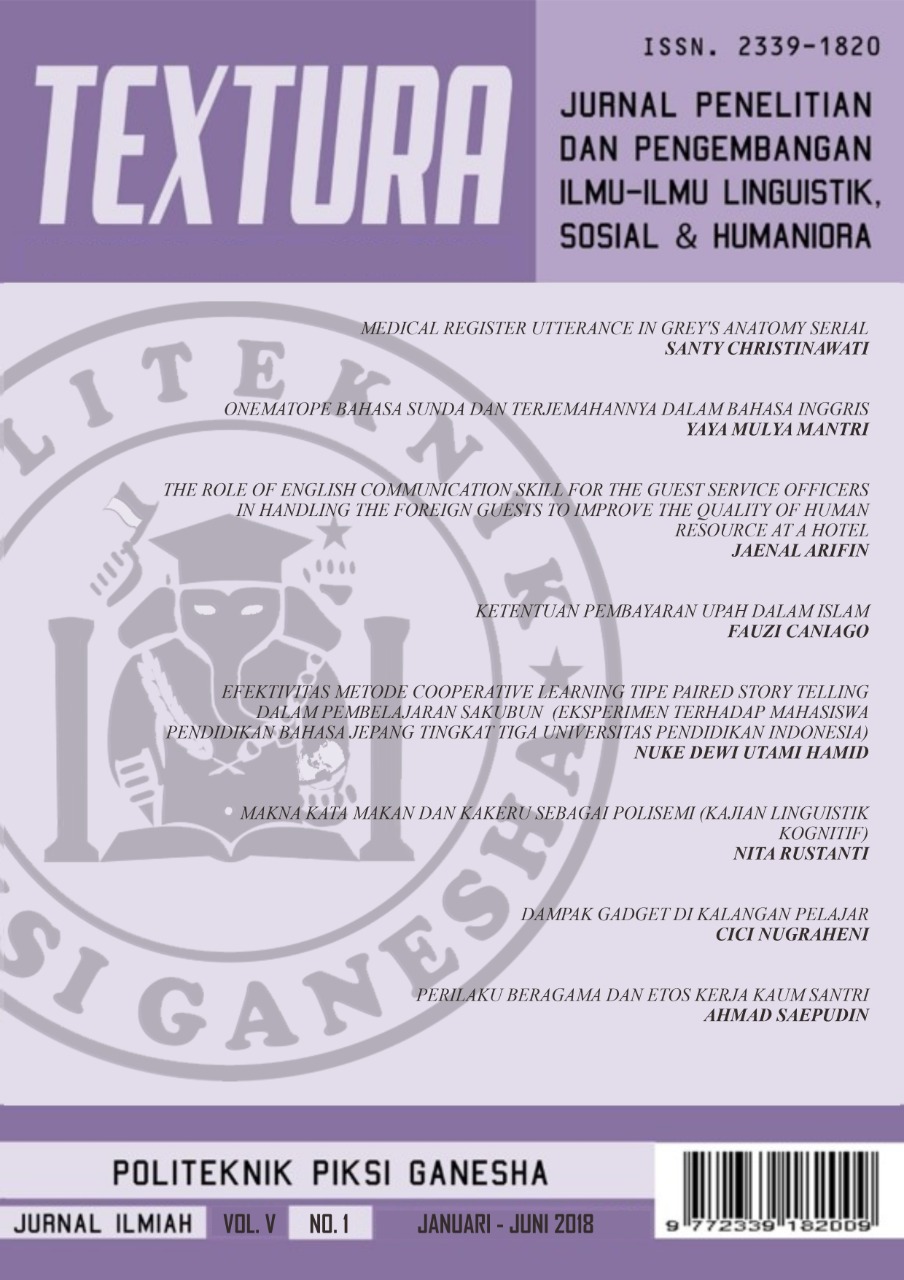EFEKTIVITAS METODE COOPERATIVE LEARNING TIPE PAIRED STORY TELLING DALAM PEMBELAJARAN SAKUBUN (EKSPERIMEN TERHADAP MAHASISWA PENDIDIKAN BAHASA JEPANG TINGKAT TIGA UNIVERSITAS PENDIDIKAN INDONESIA)
##plugins.themes.academic_pro.article.main##
Abstract
In learning a language there are four language skills: listening, speaking, reading and writing. In those four skills, writing is a very difficult thing for the learner. Just as in Japanese there is so called sakubun in Indonesian can be interpreted by making up. In general, learners find it difficult to make essays because they have to have ideas in order to be poured in essay. This study aims to determine the results of learning sakubun by using cooperative learning type Paired Story Telling. This research uses Quasi Experimental method with One Group Pre-test Post-test Design design. The sample of this study is 35 students of Japanese Language Education level three class A. The research instrument used is test and questionnaire. From result of data analysis, it is known db = 35, t-count 2,91 and t-table at level 5% = 2,03, at significance level 1% = 2,72. Means, t-count is greater than t-table. It can be interpreted that there is a significant difference to the ability of making up students before and after using Paired Story Telling method. From the result of Paired Story Telling method effectiveness test is effective. From the questionnaire results, most students considered the Paired Story Telling method appealing.

